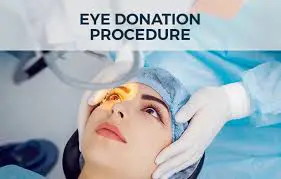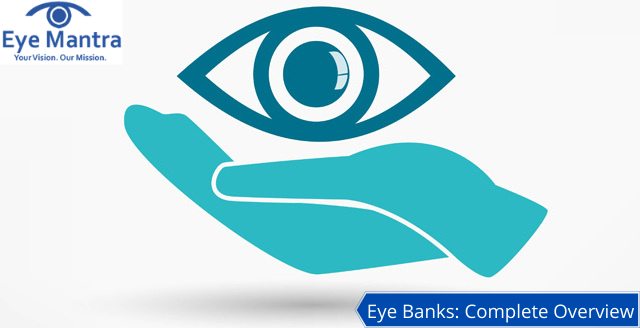Contents
Eye Bank In Delhi
An Eye Bank is simply a place to store human corneas from new donors to be transplanted in the eyes of blinds affected by corneal defects. It is responsible for all steps in the process of providing safe, quality tissue to ensure maximum success of the eye transplantation surgery.
They perform a thorough Quality Assurance system. It confirms the highest international standards to provide quality tissues in the safest way possible. And works towards maintaining the greatest ethical standards for securing respect, and consideration of the donor’s gift.
It may or may not be a non-profit organization. It is involved in the donations, procuring, testing, preservation, storage, processing, and distribution of human ocular tissues, and cells. These are to be used in corneal transplantation, ocular surgery, research, and education.
Eye Banks are autonomous organizations. Sometimes they may be associated with a hospital. Such Eye Banks would be located near that hospital set up (For example, National Eye Bank at AIIMS Delhi). According to an estimate, approximately 40-50 lakh people suffer from blindness due to corneal disease, in India.
The blindness may be due to one or the other reason. And it may be complete or partial. The cornea is a transparent layer in front of the black round part of the eye. It helps in focusing images at the retina enabling us to see.
These patients would be able to regain vision once their cornea is transplanted using one from eye donors. The cornea can be removed from the eyes after the donor’s death and can be placed in the eyes of the needy person.
The Origin of Eye Banks
In 1944, after performing several successful corneal transplantations, Dr. Townley Paton of the U.S. felt that a formal system of eye collection and preservation is necessary. Therefore, the idea of incorporating eye banks was born. And by 1944, Paton founded the world’s first eye bank, the Eye-Bank for Sight Restoration in New York.
While India had the foundation of its first Eye Bank laid down in 1945, it is the Regional Institute of Ophthalmology, Chennai Dr. RES Muthiah. Ever since the awareness campaign, social activists and doctors have not stopped. India will celebrate its National Eye Donation Fortnight from Sunday (25th of August) to Sunday (8th of September). The drive for pledging eye donation in local communities will take place. With an aim to reduce corneal blindness.
Services of Eye Bank In Delhi

The Eye Bank is responsible for all the different stages of an eye donation. These are:
Request
An eye bank would receive a call from an Eye Hospital or its Procurement Unit or some other such department that an individual who had decided to donate his eyes has died. And the preliminary criteria for the donation are completed. The Eye Bank Delhi must reach within a very short period and contact the next of kin, obtain consent and recover the tissue. All this generally needs to happen within 2 to 4 hours from the time of death.
The Next of Kin
The local Procurement Unit or Transplant Coordination, or eye bank personnel, get in touch with the next of kin, as defined by national law. And obtains consent for the donation of the dead person’s corneas.
Consent
The first thing to do after receiving the consent is to ask the next of kin to complete a medical-social history. This family history provides the eye bank with details to determine the eligibility of taking the tissues. Sometimes there may be different consenting practices for the removal of the whole eye (in some states the ocular globe is regarded as an organ). Whereas some allow the retrieval of only the cornea (considered as a tissue).
Medical History of The Donor
On receipt of the consent, the relevant medical records are obtained. These are then reviewed by the Eye Hospital. And a complete donor profile is created. Close attention is paid to the cause of death. What all medications that were administered to the individual and if any blood loss had occurred are taken care of.
Physical Inspection
If no medical “contraindications” are found, the designated medical staff or the technician from the eye bank performs a physical inspection of the eyes of the donor. This physical inspection is in addition to the donor profile. It is a screening to look for physical signs of an infectious disease or behaviour that may have put the receiver at risk. Such as intravenous drug use. A sample of blood is also taken from the donor. To be tested for HIV I and II, Hepatitis B and C, and Syphilis.
Retrieval
The donor and his/her eyes are then prepared for the procedure to retrieve the cornea or other eye tissues. It is made certain that the sterile field is not contaminated and the cornea itself is sterile. During the retrieval, the donor is invariably treated with respect and dignity.
Storage
Once the cornea has been removed, the tissue is placed in a storage medium. This medium contains chemicals to keep the tissue viable and helps to reduce bacterial growth. The technician then transports the cornea to the eye bank’s laboratory for evaluation and short-term or long-term storage depending on that eye bank practices. Some Eye Banks store at 4°C, (Hypothermic Storage), which has the maximum storage time limit of 14 days). Organ Culture Storage, on the other hand, has a maximum storage time of 5 weeks. The cornea or tissues preserved under this can be used only for selected surgery cases. The temperature is 31°C approx.
Evaluation
Specially trained technicians evaluate the cornea and the tissues through microscopes to ensure that it meets the eye bank’s strict criteria before being released for transplantation.
Eligibility Determination
The eye bank’s medical director or equivalent authority reviews the records for the donor and makes a final determination of eligibility.
Release of Tissue
If the release of the tissue gets authorized, the cornea is then sealed in a container with a temperature between 2-8 degrees so that it does not freeze (for the Hypothermic preserved corneas). Or they are preserved in a special container designed to maintain the cornea at room temperature (in the case of Organ Cultured corneas).
Labelling
The tissue is given a unique identification with a number to make it easier for the eye bank to track the tissue from donor to recipient. Later, it is shipped to a surgeon or another eye bank for transplant in answer to a specific tissue request for a scheduled surgery date.
Follow-Up
Corresponding with, and support of, donor families, and recipients are important. Support is provided to families of eye donors before, during, and after eye donation. Although the identity of recipients is not to be revealed, a donor family can ask about how many people have been helped through transplantation and how they are progressing. In the same way, corneal recipients are monitored. And an alert will be raised if there is an unexpected complication, serious adverse reaction, or any anomalies which may put their health at risk or that of other recipients who may have received tissue from the same donor source.
Departments of The Eye Bank
The Eye Bank has different divisions that take care of various activities for ease of administration. It ensures smooth functioning. The various departments in an efficient eye bank Delhi may be:
Technical Department
Its functions include the following responsibilities:
- Tissue or Cornea Recovery,
- Processing and distribution,
- Preparing tissue for different corneal transplant procedures,
- Grading of corneal tissue,
- Storage of all tissues including cornea, sclera, and limbus,
- Distribution of corneas and other tissues to Eye Hospital Delhi, Clinics, and other Institutions for transplants, and other surgeries that require donated tissue,
- Conducting research in Eye Banking and transplantation,
- Providing space, machinery and technology, and tissue for research purposes.
Donor Development
The responsibilities of this department include the following functions:
- Promotion of awareness about organ donation through community outreach including radio and television advertisements, hoardings and billboards and public awareness lectures,
- Promotion of the Eye Bank for the above-stated donations,
- Strengthening of relationships with the local community, hospitals, hospices, and NGOs working towards the promotion of eye donation,
- Providing support and counselling to the donor’s kin and families during and after the cornea retrieval.
Quality Control
Its responsibilities include the following functions:
- Ensuring that proper measures are undertaken during all stages of tissue handling including retrieval, grading, processing, and distribution,
- Strict adherence to quality standards prescribed by the EBAI (Eye Bank Association of India), and to ensure cooperation with EBAI during compliance checks.
Teaching and Training
- Its responsibilities comprise of the following functions:
- Education and training of Eye Bank personnel. Including technicians and counsellors. Some Eye Bank Delhi is also involved in the training of eye surgeons who want to super specialize in corneal transplants,
- Arranging lectures and Community Outreach programs by the personnel and community leaders to raise awareness about eye donation and Eye Banking,
- Most Banks also hold lectures on topics of public interest such as eye care and prevention of blindness.
Eye Bank Association of India

Eye Donation
EBAI (Eye Bank Association of India) is a national organization serving as a resource centre for all eye banks and organizations involved in eye donation. There are about 404 organizations, registered with EBAI.
The government, central as well as state, helps conduct seminars and workshops to educate the public about eye donation. International organizations such as ORBIS, Lions Club, Rotary International, etc, support many of its activities.
Corporates, too, have contributed to its programs with financial and other resources. Many other organizations also partake in spreading awareness about eye donation and facilitating eye donation in whatever way they can. It was founded in 1989 to grant a further push to the eye donation movement. It is the apex body that is responsible for regulating the working and coordinating the efforts of all Eye Banks and citizens who aim to promote eye donation.
The EBAI is responsible for establishing comprehensive medical standards for Eye Banks all over India. EBAI has also carried out standardization of the training and certification of Eye Bank technicians and counsellors in India. The EBAI is the accrediting agency for Eye Banks in India.
It evaluates each Eye Bank regularly to ensure the quality standards are being maintained. And the process of eye donation and corneal transplantation is safe and comfortable for the donors and patients. In 1991, EBAI initiated a Hospital Cornea Retrieval Program. It has helped formulate the Eye Banking Medical standards in association with the Ministry of Health & Family welfare in 1999.
Objectives
EBAI was established to increase the donation of eyes, introduce uniform standards in Eye Banks & their processes. And to raise public awareness about eye donation and the prevention of corneal blindness.
- Raise public awareness about eye donation,
- Expand and improve the quality and quantity of corneas collected,
- Develop and implement uniform standards and practices for medical and operations, which are at par with international standards,
- Function as a resource centre for all Eye Banks in the country.
If you are planning to take the pledge of donating your eyes, you should try to keep them healthy. For that, you should visit an eye specialist and get your eyes checked regularly. So, call +91-8851044355, and book an appointment now!!! Or you can email us at [email protected].
To know all about your eyes and our services, please visit Eye Hospital Delhi. Our services include Cataract Surgery, Specs Removal, Retina Surgery and many more.



